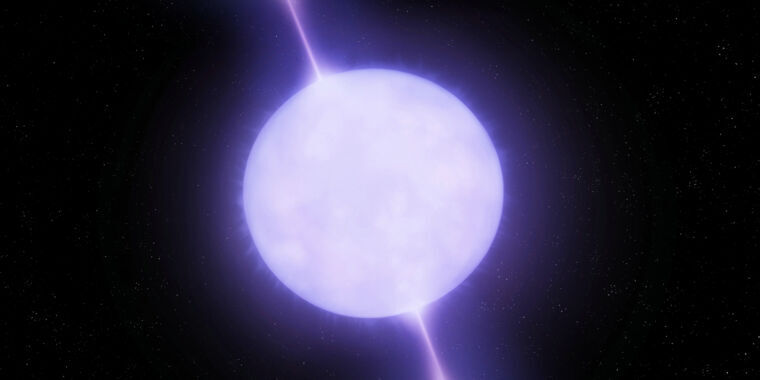Roughly a year ago, astronomers announced that they had observed an object that shouldn’t exist. Like a pulsar, it emitted regularly timed bursts of radio emissions. But unlike a pulsar, those bursts were separated by over 20 minutes. If the 22-minute gap between bursts represents the rotation period of the object, then it is rotating too slowly to produce radio emissions by any known mechanism.
Now, some of the same team (along with new collaborators) are back with the discovery of something that, if anything, is acting even more oddly. The new source of radio bursts, ASKAP J193505.1+214841.0, takes nearly an hour between bursts. And it appears to have three different settings, sometimes producing weaker bursts and sometimes skipping them entirely. While the researchers suspect that, like pulsars, this is also powered by a neutron star, it’s not even clear that it’s the same class of object as their earlier discovery.



So maybe a binary system causing the signal to only periodically wobble into earth’s path wile missing for mist of it?